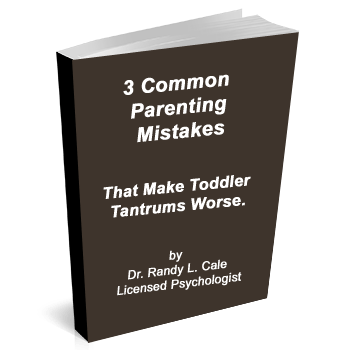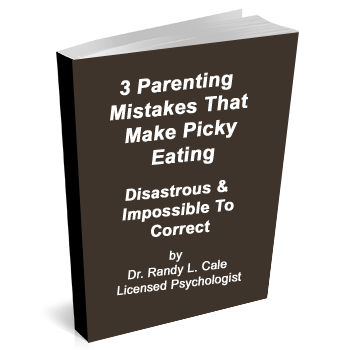Do you find yourself wondering…
- Do you find yourself dreading the bedtime routine?
- Is the bedtime routine more like bedtime chaos?
- Is it a constant struggle and battle to get the children to bed on time?
- Are the kids constantly whining and complaining when they know they have to go to bed?
- Do you have struggles getting them away from the TV and off the computer, or of the telephone?
- Does everyone end up going to bed in a state of frustration and unhappiness?
- Do you have trouble keeping the kids in their beds, after they go to bed?
 If you are struggling with any of these issues, then welcome to reality; many parents do. It’s one of the most common questions that I handle when making presentations to parents.
If you are struggling with any of these issues, then welcome to reality; many parents do. It’s one of the most common questions that I handle when making presentations to parents.
There’s a reason why this is such a difficult set of circumstances. It is a situation where you have limited leverage with the kids and it requires a clear and concise plan to get the kids to bed easily and effortlessly.
Some kids don’t like to go to bed. They will fight you every step of the way. And yet other kids will go to bed without a single word. It’s just the way it is.
What’s important is to understand that the kids who will fight you on going to bed require that you have a better plan than they do. If they fight you, and you simply fight back, this is not a plan. This is a battle! And you don’t want to get in a battle every night before bedtime.
So what’s the solution? You have got to have a better plan.
The plan for an effective bedtime routine is probably one of the more complicated and demanding parenting plans that you’ll have to deal with. It just takes more precision and clarity than do many circumstances. Why? Because you have relatively little leverage with the kids once it’s time for bed.
As a result, it becomes critically important to use the leverage that you do have and to set up a program that gradually and consistently teaches the children that it makes sense to go to bed, rather than deal with the consequences.
Three Patterns You Must Avoid!
1. You must avoid verbal and physical battles over TV, toys, computers, phones, and video games.
If you’re engaging in battles with kids consistently over these items, this is a losing plan. We have to get you out of these battles.
You notice that the more you battle with the kids, the more you keep battling. If you win the battle tonight after 18 minutes of struggles and quarreling, you can bet that next month that battle will take you 22 minutes to win. It just keeps getting worse, if you keep engaging in the battle.
2. You must stop using threats that have no impact.
Many parents end up frustrated and out of control emotionally. When you are in reaction mode, you are likely to make some poor choices about what to say.
One of the most ineffective strategies is to start threatening to take away things. This won’t make a difference.
A sister version of the same ineffective strategy is to try to bribe the kids with something that they want – if they go to bed throughout the week. In other words, offering to buy them a new CD if they get to bed on time is not a long-term strategy that is going to work.
In general, it never works to try to purchase behavior. If you go down that path, you’ll always be trying to buy their behavior. The problem is that your pocketbook isn’t that deep. More problematic is the fact that you have gained no respect for your authority as a parent by buying behavior. Stay away. Stay away. Stay away from this!
3. You must not lose control emotionally.
When you lose it emotionally, you go into reaction mode. When you react, you yell. You scream. You threaten. You say ugly things.
You become emotionally charged, and your children become emotionally charged.
Can this possibly work to create a comfortable, loving, and peaceful way to move into a sleepful state? Of course not!
It takes your kids in the opposite direction that you want. It takes you in the opposite direction that you want. The more reactive you become, the more likely it is that you are feeding – and worsening – the very behavior that you are trying to correct.
As you become emotional and reactive, this energizes your children’s emotions. It makes it more likely that they are going to do battle. If you are successful in getting them to beds in this situation, it is more likely that their adrenaline is flowing, and that it is going to be harder to get to sleep. This then creates another layer of difficulties.
So what’s the solution? Here are the basics:
1. Get clear about your expectations.
 What bedtime makes sense to you? What’s the routine leading up to bedtime? What daily structure and flow of events is going to make for an easy routine? It’s important to get clear about all of these things.
What bedtime makes sense to you? What’s the routine leading up to bedtime? What daily structure and flow of events is going to make for an easy routine? It’s important to get clear about all of these things.
Certain routines are going to make the final bedtime process easier. These routines per se do not guarantee you success; they do, however, make it easier to get on the path toward success.
What would be a simple example of this? A very simple and straightforward example would be that many kids often put up a battle when it is time to take their bath and get on their P.J.’s right before bed. (Again, remember my comment from earlier in this article. You don’t have much leverage, if you have waited until 8:15 p.m. and their bedtime is 9:00 p.m.) Turn this around.
As soon as dinner is over, make sure the kids are off to do their bath, get their P.J.’s on, and get ready for bed – before any watching TV or playing with games or toys.
This simple notion of making sure that they have completed their preparations for bed before you allow an opportunity to play, is a key ingredient. It’s one of the essential tools that give you a clue to the underlying principle that I often talk about in my workshops and my program materials.
When we study kids who are successful, and who move through life with relative ease, we find that a simple pattern is easily observed.
The pattern?
Parents have taught their kids to take care of work and responsibilities, before play and downtime. This simple pattern begins to emerge in the morning routine, the afternoon routine, and the evening routine. It’s evident in the way the kids get up in the morning and take care of responsibilities. It’s evident in the afternoon when they do their homework and a few chores before they play. It also shows up at bedtime, in completing responsibilities before there is an opportunity to play and have downtime.
While this is not the only ingredient to a successful plan, it is a critical component. Do not ignore the importance of this, if you are struggling with bedtime routines.
In the “Bedtime Battles to Bedtime Bliss” CD program, you’ll find more details in a precise methodology for establishing a structure. In particular, I’ll spend a great deal of time on the following:
2. Controlling the Environment Rather Than Controlling Kids
The essential theme of effective parenting centers around how you teach children. We just don’t control kids. If we did have control, there would be no need for these materials. There would be no need for parenting books or programs. It would be more like having a well-trained dog rather than a child. But this is not reality. We don’t have control, but we do have influence. How we have the most influence is by learning how to master control of our environment – so kids can learn from their choices.
To move children from “Bedtime Battles to Bedtime Bliss” you’ll find that kids can learn from environmental consequences. Kids do not learn from words and lectures. Kids do not learn from threats and yelling. Kids do not learn from bribes and pleading. Kids don’t learn when you nag and remind and bug them to death.
When you exhibit those kinds of behaviors, kids just become more dependent upon you – rather than independent – in these routines. The goal is to create children who are independent in getting these things done.
 It is essential to understand how you begin to gain control of the environment so that you don’t try to control your kids, but rather you teach your kids as a result of the choices they make. Depending on your household, there are several ways in which you can begin to implement environmental changes, to help teach a particular bedtime routine.
It is essential to understand how you begin to gain control of the environment so that you don’t try to control your kids, but rather you teach your kids as a result of the choices they make. Depending on your household, there are several ways in which you can begin to implement environmental changes, to help teach a particular bedtime routine.
The first part of that is by using simple changes in the structure, where you require kids to take care of their bath and shower and get their P.J.’s on before they sit down to watch a video or play a game with you. The second way you do that is by establishing clear limits by controlling the environment when they go over those limits.
If it’s 7:35 p.m., and bedtime is at 7:30 p.m. what do you do? The kids are still watching TV, and it’s now 7:40, what do you do? If you don’t want to battle with the kids, how can you begin to influence the environment, rather than try to control your child? If your child is now 10 years old, and you can no longer pick him up and carry him into the bedroom, how can you teach this limit?
I keep asking these questions to have you generate some ideas on your own. Let me give you a strong clue about this, however:
If your kids are watching TV and it’s past their bedtime, do you try to get them to turn off the TV, or do you simply cut off the TV? You turn it off.
- If your kids are playing with their toys, and it’s 15 minutes past their bedtime, do you ask them to put the toys away or do you make the toys? You take the toys.
- If your teenager is on the phone at 9:30 p.m., and you’ve already informed her that there is no phone time after 9:00, do you ask her to get off the phone, or do you disconnect the phone? You disconnect the phone.
These are how you begin to take control of your environment, to teach kids what the limit is on their behavior. For bedtime issues, you will state that the limit is based on a particular time. And you inform your children that you want them in their beds when that time arrives. It is that simple.
When trying to establish a limit on behavior, you must use consequences, and consequences come from controlling your environment.
On the Bye-Bye Bedtime Battles CD Program, I walk you through a detailed set of consequences for every kind of circumstance. If this is a significant struggle for you, this article will give you a sense of where you begin. However, the CD Program will offer you the full details.
I invite you to begin to consider the power of this concept. You teach limits – not by trying to control kids, but by controlling the environment that surrounds them. This is a core principle around which all effective parenting strategies work. It is built into every program that I offer, including the Bye-Bye Bedtime Battles CD program. To have a full appreciation for how this concept is applied when dealing with bedtime routines, I encourage you to check out the program.
As always, your satisfaction is guaranteed with any program you purchase through TerrificParenting.com
 Whether or not you Bye-Bye Bedtime Battles or not, it is an absolute must to remember that a learning process takes time. Your kids will be unhappy when you begin to make changes. They may sit around and whine and complain a bit. They may stomp their feet and jump up and down. They may not be happy when you take away their toys, or cut off the TV, or shut down the phone in the middle of a conversation. That’s okay.
Whether or not you Bye-Bye Bedtime Battles or not, it is an absolute must to remember that a learning process takes time. Your kids will be unhappy when you begin to make changes. They may sit around and whine and complain a bit. They may stomp their feet and jump up and down. They may not be happy when you take away their toys, or cut off the TV, or shut down the phone in the middle of a conversation. That’s okay.
Allow them to have their upset. Allow them to be frustrated or annoyed with you. Allow them to be unhappy about it. Allow them to go through a period when they fight you on this. BUT: you consistently demonstrate that you are willing to cease exquisite and complete control over your environment, while not attempting to control their reaction to it.
As you go through this process, it may take one or two weeks before things begin to smooth out. Expect a bit of a rocky road. As that rocky road begins to unfold, however, there is a third essential component to keep in the forefront of your mind:
3. Start Investing in What You Want, Not What You Don’t Want.
If you are struggling with bedtime routines, notice how the “unwanted” behavior keeps sucking you in. You keep getting pulled into it, to argue, negotiate, nag, remind, bribe, plead, and, ultimately, end up screaming at it. You just keep investing more and more of your energy in what you don’t want and expecting it to go away.
It doesn’t work that way. Instead, you have to allow for the whining, you have to allow for the unhappiness. You have to allow for the complaining, and not try to force it to go away. [Remember, you still have control over the environment. You just surrendered trying to control your child’s response to your choices as a parent.] Under this approach, you allow for all that unhappiness, whining, and complaining, or yelling at you because you cut off the TV or took away their toys. Allow for that, and give it no energy.
On the other hand, as you wait for something positive to happen, be ever so vigilant to “catch it” as soon as it shows up. As soon as you see a healthy choice, such as moving toward the bedroom, reengage with your kids.
When they are putting on their PJs, pop in and give them thumbs up. When they jump into the bathtub without an argument, smile at them or talk to them for a minute or two. Even if they just spent 15 minutes stomping their feet and complaining about going to bed, reengage with them, as if nothing happened, once they climb into bed. (Of course, if they are nasty with you, I would then disengage again.)
The bottom line: You can’t create a healthy bedtime routine by putting all of your energy into the bedtime battles. Instead, you must become more of a master of your behavior, so that you don’t lose control and put your energy into the battles. In addition, you have to become a master of the environment and understand how to use structure to get some leverage over their behavior. While I have touched upon it in this article, several other important components of this give you significantly greater leverage. These are covered on the Bye-Bye Bedtime Battles CD program.
You will have to find ways to make sure that you are not investing your energy in what you don’t want, while, at the same time, gaining tools to enhance your control over the environment, rather than your children.
In my experience, these simple ideas almost always work. Did I say always? Yes, they almost always work.
Are some situations more challenging? Of course. If you find yourself in one of those situations, consider the “Bye-Bye Bedtime Battles” CD program. In that program you’ll learn the following:
- The mindset needed to make the program work
- At least three ways to establish simple structure in the bedtime routine
- Precisely what to do when kids ignore your request to go to bed
- A list of consequences that begin to make an impact over a one-or-two-week period
- Ways to deal with kids who come into your bedroom at night
- Ways to deal with kids who become irritable and grumpy at bedtime
- What to do when kids don’t seem to need much sleep
- 12 ways to gain control of the environment, rather than controlling kids
- How to end the evening on a positive and pleasant note
- How to work with younger kids and take advantage of their desire to connect before bedtime
- And much more…
 This program is available in a CD format, or in a downloadable file (in other words, you can get this program in your hands right now!). While straightforward, the program is loaded with details to cover every possible scenario. You’ll find a way to make the evening routines easier, or enjoyable, and perhaps most importantly automatic.
This program is available in a CD format, or in a downloadable file (in other words, you can get this program in your hands right now!). While straightforward, the program is loaded with details to cover every possible scenario. You’ll find a way to make the evening routines easier, or enjoyable, and perhaps most importantly automatic.
That’s the key! It’s about creating routines that are automatic and do not require ongoing negotiation and reminding, and management by parents.
For many parents, the bedtime battle issue is constantly stripping away their joy and happiness. It often leads to a miserable ending to an otherwise pleasant day.
What is it worth to you? What is it worth to you to have these routines move smoothly and peacefully?
I know what parents tell me. Parents tell me that the relief they feel makes it easier to come home at night.
- They tell me that it’s fun to be with their kids again.
- They tell me that, “It’s like I have a whole new family.”
- They tell me, “The kids sleep better. I sleep better.”
- They relate, “It’s easier to enjoy my children again.”
- They also say, “The kids wake up refreshed and ready for school. Our life is better.”
If you want to start improving a chaotic bedtime situation right now, get started with these principles right away. If you want the full program, consider the “Bye-Bye Bedtime Battles” program. You can order the CD, and you can listen to it at your pleasure, in your car or your home. Another option is to download this information immediately in an MP3 file, so you can begin today.
- What if you could have a fraction of the struggles you now have?
- What if your kids went to bed without a battle?
- How much calmer would you sleep if you could positively end your days with the kids?
- How much better could your kids perform if they went to bed on time – without a struggle?
- What if your evenings could be filled with ease and joy?
- What would those changes be worth?
For an investment of 30 days of changing your approach, you can have these changes in your home. I encourage you to put these principles to use right away and to order the program Bye-Bye Bedtime Battles so you can have all the specifics of a comprehensive plan.














